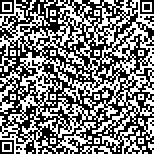| 刘潇霞,乔 良,钟志刚,等.2019—2023年度四川省城市癌症早诊早治项目人群风险评估及筛查分析[J].中国肿瘤,2024,33(7):542-549. |
| 2019—2023年度四川省城市癌症早诊早治项目人群风险评估及筛查分析 |
| Analysis of Population Risk and Screening Assessment of Urban Cancer Early Diagnosis and Treatment Program in Sichuan Province from 2019 to 2023 |
| 投稿时间:2024-02-29 |
| DOI:10.11735/j.issn.1004-0242.2024.07.A005 |
|
 |
| 中文关键词: 癌症筛查 早诊早治 风险评估 城市 四川 |
| 英文关键词:cancer screening early diagnosis and treatment risk assessment urban Sichuan |
| 基金项目:四川省自然科学基金(2022NSFSC0640);四川省科技厅重点研发项目(2023YFG0148);四川省医学科研课题计划(S22004);四川省科技厅科技创新创业苗子工程项目(2021JDRC0155);四川省科普培训项目(2023JDKP0034);成都市科技局技术创新研发项目(2022-YF05-02005-SN) |
|
| 摘要点击次数: 864 |
| 全文下载次数: 347 |
| 中文摘要: |
| 摘 要:[目的]分析2019—2023年四川省城市癌症早诊早治项目筛查结果和居民癌症高危情况。[方法] 采取整群抽样方式,对四川省成都市、自贡市部分社区40~74岁居民进行癌症筛查,通过自填式癌症风险评估问卷和快速生物学检测,并根据中国居民癌症防控行动风险评估模型,评估居民个体5种癌症的患癌风险。根据风险评估结果及临床筛查数据,计算各癌种的高危率、临床筛查率、阳性病变检出率。[结果] 2019—2023年度四川省城市癌症早诊早治项目共40 027人参与风险评估,30 850人被评估为高风险,高危率为77.07%;男性高危率(80.02%)高于女性(75.84%),65~69岁年龄组高危率最高(82.86%)。女性乳腺癌高危率最高(45.84%),其后依次为肺癌(39.04%)、结直肠癌(36.25%)、上消化道癌(27.21%)、肝癌(12.43%)。五大类癌症筛查率从高到低依次为女性乳腺癌(62.87%)、肺癌(53.26%)、肝癌(33.90%)、上消化道癌(33.46%)、结直肠癌(23.93%)。各癌种阳性病变检出率从高到低依次为女性乳腺癌(14.45%)、结直肠癌(6.16%)、肝癌(3.26%)、肺癌(1.49%)、食管癌(0.30%)、胃癌(0.11%)。[结论] 四川省城市癌症早诊早治项目显示人群高危率较高,临床筛查依从性较好,通过筛查可以及早发现癌前病变和早癌患者。但参与评估的男性人群较少,65岁及以上人群临床筛查参与率较低,提示在今后的工作中应加强男性人群和老年人群的防癌意识。 |
| 英文摘要: |
| Abstract: [Purpose] To understand the high-risk situation of cancer among Sichuan residents through the implementation of the Urban Cancer Early diagnosis and Treatment Program. [Methods] From 2019 to 2023, Cluster sampling method was used to select residents aged 40~74 years old in Chengdu City and Zigong City to assess the risk of five types of cancer in individual residents through self-administered cancer risk assessment questionnaires and rapid biological tests. Based on the risk assessment results and clinical screening data, the high-risk rate, clinical screening rate and positive lesion detection rate for each cancer type were calculated. [Results] From 2019 to 2023, 40 027 people participated in the risk assessment of the Sichuan Province Urban Cancer Early Diagnosis and Treatment Program, and 30 850 people were at high risk, with a high-risk rate of 77.07%; the rate was higher for men (80.02%) than that for women (75.84%), and the highest high-risk rate (82.86%) was found in the age group of 65~69 years old. Female breast cancer had the highest risk rate (45.84%), followed by lung cancer (39.04%), colorectal cancer (36.25%), upper gastrointestinal cancer (27.21%) and liver cancer (12.43%). The screening rates for the five major types of cancer were, in order of prevalence, female breast cancer(62.87%), lung cancer (53.26%), liver cancer (33.90%), upper gastrointestinal cancer (33.46%) and colorectal cancer (23.93%). The highest detection rate of positive lesions was found in female breast cancer (14.45%), followed by colorectal cancer (6.16%), liver cancer (3.26%), lung cancer (1.49%), esophageal cancer (0.30%) and stomach cancer (0.11%). [Conclusion] The Urban Cancer Early Diagnosis and Treatment Program in Sichuan shows that the population has a high-risk rate and the clinical screening compliance is good. Screening can early detect cancer and precancerous lesions. However, fewer men participate in the evaluation, and the participation rate of clinical screening among people aged 65 years old and above is low, which indicate that the awareness of cancer prevention among men and the elderly should be strengthened in the future work. |
|
在线阅读
查看全文 查看/发表评论 下载PDF阅读器 |